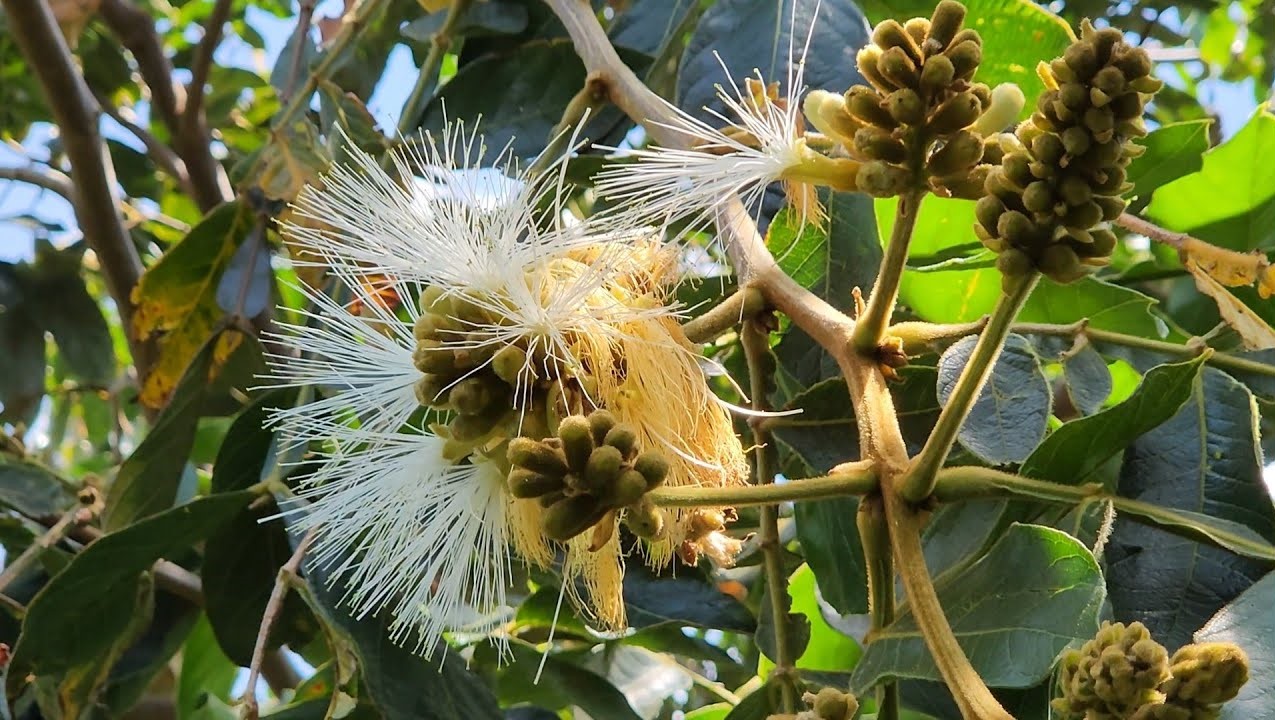
Ever heard of the Ice Cream Bean? This tropical delight, also known as Inga edulis, offers a unique taste experience. Imagine a fruit that tastes like vanilla ice cream! Found in South America, this legume grows on trees reaching up to 30 meters tall. The pods can be over a meter long, filled with sweet, cottony pulp. Not only delicious, but the Ice Cream Bean also supports sustainable agriculture by enriching soil with nitrogen. Curious about its health benefits? It's packed with fiber, vitamins, and antioxidants. Ready to learn more? Let's dive into 15 fascinating facts about this extraordinary fruit!
Key Takeaways:
- Ice cream bean is a tropical fruit with pods containing sweet, vanilla-like pulp. It's rich in fiber, vitamin C, and antioxidants, making it a healthy and low-calorie snack.
- Ice cream bean trees provide shade, help improve soil fertility, prevent erosion, and support wildlife, making them important for the environment and biodiversity.
What is Ice Cream Bean?
Ice cream bean, also known as Inga edulis, is a tropical fruit native to South America. It gets its name from the sweet, creamy pulp inside its pods, which tastes remarkably like vanilla ice cream. Here are some fascinating facts about this unique fruit.
-
Native Habitat: Ice cream bean trees thrive in the rainforests of South America, particularly in countries like Brazil, Peru, and Colombia.
-
Tree Size: These trees can grow quite large, reaching heights of up to 30 meters (about 98 feet).
-
Pod Length: The pods containing the fruit can be impressively long, sometimes measuring up to 1 meter (about 3 feet).
-
Edible Pulp: The white, fluffy pulp inside the pods is the part that’s eaten. It has a sweet, vanilla-like flavor, making it a delightful treat.
Nutritional Benefits
Ice cream beans are not just tasty; they also offer several health benefits. Here’s what makes them a nutritious snack.
-
Rich in Fiber: The pulp is high in dietary fiber, which aids digestion and helps maintain a healthy gut.
-
Vitamin C: Ice cream beans are a good source of vitamin C, which boosts the immune system and promotes healthy skin.
-
Low in Calories: Despite their sweet taste, these fruits are relatively low in calories, making them a guilt-free indulgence.
-
Antioxidants: They contain antioxidants that help fight free radicals in the body, reducing the risk of chronic diseases.
Cultural Significance
Ice cream beans hold a special place in the cultures of the regions where they grow. Here are some cultural aspects related to this fruit.
-
Traditional Medicine: Indigenous communities have used various parts of the ice cream bean tree in traditional medicine for centuries.
-
Culinary Uses: Besides being eaten fresh, the pulp is sometimes used in desserts and beverages in South American cuisine.
-
Shade Provider: The large, spreading canopy of the ice cream bean tree makes it an excellent shade provider in tropical regions.
Environmental Impact
The ice cream bean tree plays a significant role in its ecosystem. Here’s how it contributes to the environment.
-
Nitrogen Fixation: The tree has the ability to fix nitrogen in the soil, improving soil fertility and benefiting other plants around it.
-
Erosion Control: Its extensive root system helps prevent soil erosion, making it valuable in maintaining the stability of rainforest ecosystems.
-
Habitat for Wildlife: The tree provides habitat and food for various wildlife species, contributing to biodiversity.
Growing Ice Cream Bean Trees
Interested in growing your own ice cream bean tree? Here are some tips to get you started.
- Climate Requirements: These trees prefer warm, tropical climates and need plenty of sunlight and water to thrive.
The Sweet Finale
Ice Cream Beans aren't just a quirky name. These tropical delights offer a unique blend of sweetness and nutrition. Packed with vitamin C, fiber, and antioxidants, they make a healthy snack. Their vanilla ice cream-like flavor is a hit among kids and adults alike. Grown mainly in South America, these beans thrive in warm climates. They’re not just tasty; they’re also eco-friendly, helping to improve soil quality. Whether you’re munching on them raw or adding them to desserts, Ice Cream Beans are a versatile treat. So next time you spot them at a market, give them a try. You might just find your new favorite snack. With their health benefits and delicious taste, Ice Cream Beans are a win-win. Enjoy the sweetness nature has to offer!
Frequently Asked Questions
Was this page helpful?
Our commitment to delivering trustworthy and engaging content is at the heart of what we do. Each fact on our site is contributed by real users like you, bringing a wealth of diverse insights and information. To ensure the highest standards of accuracy and reliability, our dedicated editors meticulously review each submission. This process guarantees that the facts we share are not only fascinating but also credible. Trust in our commitment to quality and authenticity as you explore and learn with us.


